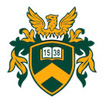Novák Ádám (szerk.): Fontes Memoriae Hungariae III. Varsóban őrzött magyar vonatkozású oklevelek, 1439–1489. Közreadja: Novák Ádám, Tóth Orsolya és Tóth Péter (Debrecen, 2019)
Sobiesław Szybkowski: Polish-Hungarian Relations between 1437 and 1490. A Short Introduction
XVI the Posthumous and the Bohemian, Hungarian and Austrian estates. The wedding agreement was concluded in Wrocław in August 1453. The wedding and coronation took place in Cracow on 10 February 1454. As we can remember, the marriage between Casimir and Elisabeth had first been considered back in 1434. This was very important from the perspective of future Polish relations with Hungary and Bohemia, because it gave the descendants of Casimir and Elisabeth dynastic rights to both aforementioned kingdoms. As a price of the consent of both Ladislaus the Posthumous and Frederick III, Elisabeth had to forgo her rights to the Austrian succession, which was confirmed by a document she issued in Cracow on 6 March 1454.51 However, immediately after Casimir married Albert’s daughter, he became involved in the conflict between the Prussian estates and the Teutonic Order. Already during his wedding, the Polish monarch made arrangements with a legation from the Prussian estates. As a result Prussia was incorporated into the Kingdom of Poland and a war with the Teutonic Order began (it was the so-called Thirteen Years’ War which lasted from 1454 to 1466). 52 Therefore, Polish politics focused on northern matters. In the meanwhile, during the regency of John Hunyadi, Hungary was mainly preoccupied with the Ottoman military aggression. After Hunyadi died in 1456 a serious internal crisis occurred. After the premature death of Ladislaus the Posthumous in 1457, the younger son of John Hunyadi, Matthias Corvinus, became King of Hungary, who was crowned in 1458.53 At the same time, George of Poděbrad was elected as the successor of Ladislaus in Bohemia.54 At the beginning of his rule, Matthias Corvinus came into conflict with Frederick III who also claimed the right to the Hungarian throne. Their conflict ended in 1463. According to the settlement, the Emperor accepted Matthias’s kingship in Hungary and gave back the Hungarian crown jewels, whereas Corvinus agreed that the Habsburgs will succeed in Hungary, provided he left no male descendants. 55 Therefore, the political situation did not create favourable conditions for developing closer connections between Poland and Hungary. Even though at the beginning of the Thirteen Years’ War Ladislaus the Posthumous proposed to be a mediator, he did this because he was King of Bohemia and acted in consultation 51 Wdowiszewski, Zygmunt: Genealogia Jagiellonów . Warszawa, 1968. 59–61.; Biskup, 1982B. 441–442.; Łowmiański, 1999. 276–278. 52 Biskup, Marian: Zjednoczenie Pomorza Wschodniego z Polska w połowie XV wieku . Warszawa, 1958. 278–331.; Biskup, 1967. 37–41. 53 Engel, 2001. 296–297.; Kalous, 2009. 40–44. 54 Biskup, 1967. 518–519.; Biskup, 1982B. 434. 55 Kalous, 2009. 59–65.; Baczkowski, Krzysztof: Między czeskim utrakwizmem a rzymską ortodok sją czyli walka Jagiellonów z Maciejem Korwinem o koronę czeską w latach 1471–1479. Oświęcim, 2014. (first edition: Kraków, 1980) 25.
